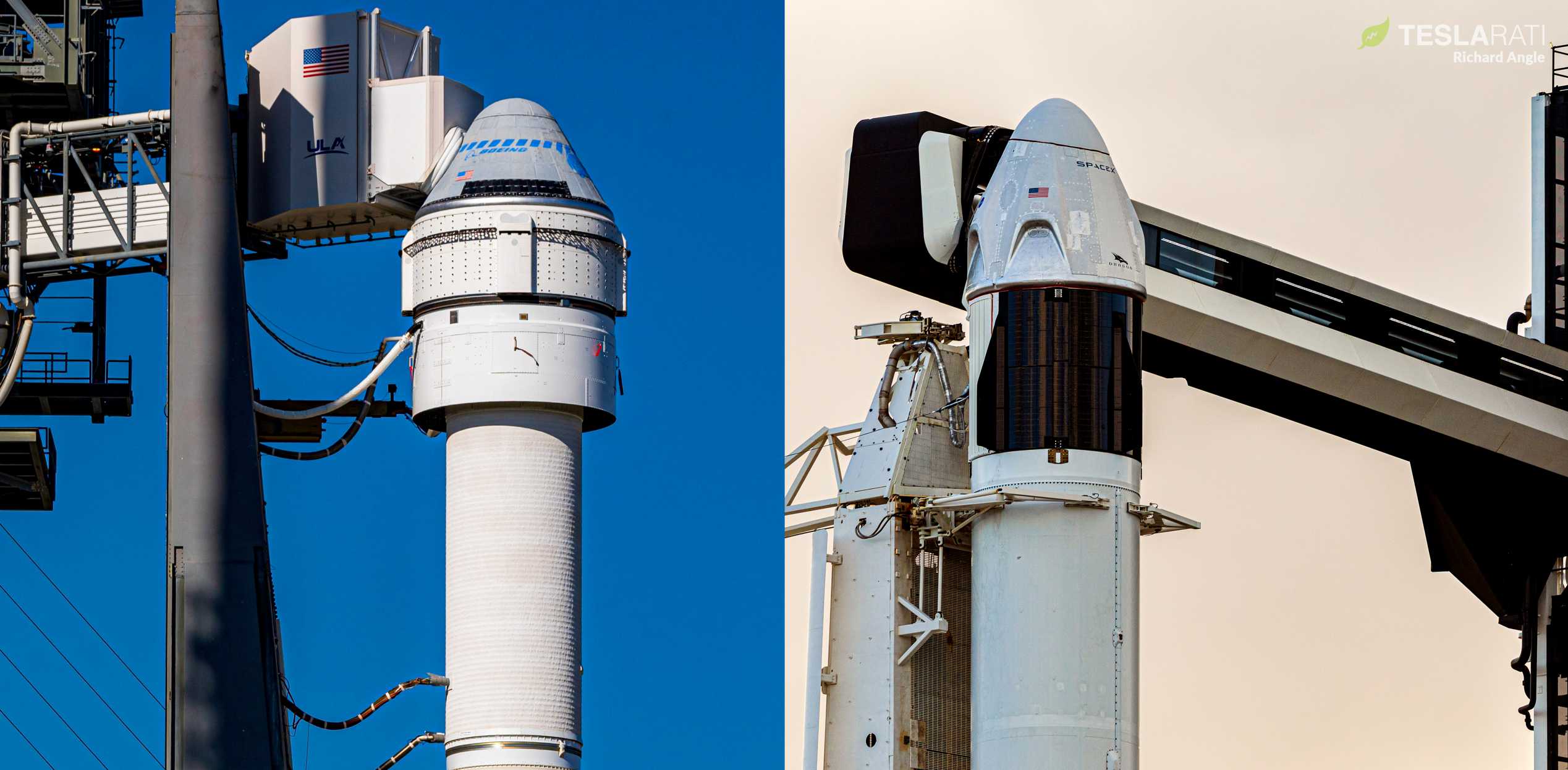
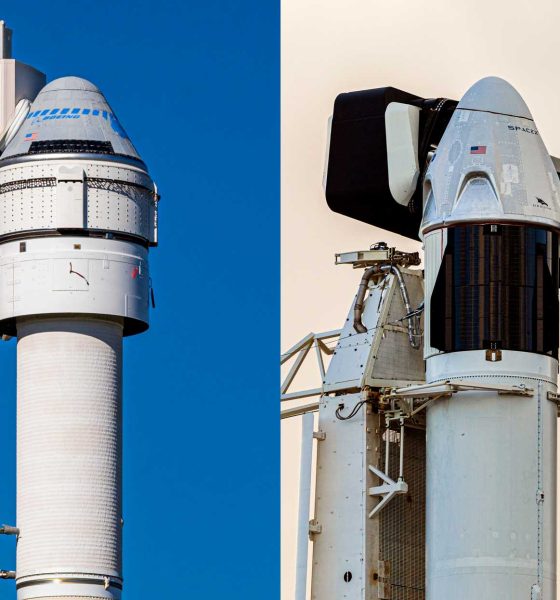
News
SpaceX set to launch NASA astronauts first after Boeing narrowly avoids catastrophe in space
SpaceX is set to become the first private company to launch NASA astronauts as few as three months from now, all but guaranteed after Boeing’s competing Starliner spacecraft narrowly avoided a catastrophe in space on its orbital launch debut.
The ultimate purpose of NASA’s Commercial Crew Program (CCP) is to ensure that the US is once again able to launch its own astronauts into orbit and to the International Space Station (ISS) – a capability the country has not possessed since it prematurely canceled the Space Shuttle in 2011. In a logical step, NASA decided to fund two independent companies to ensure that astronaut launch capabilities would be insulated against any single failure, ultimately awarding contracts to Boeing and SpaceX in 2014. Boeing did actually try to have Congress snub SpaceX back in 2014 and solely award the contract to Starliner, but the company thankfully failed.
As a result, SpaceX beating Boeing on the (not-a-) race to launch NASA astronauts to the International Space Station (ISS) would represent an immense and deeply embarrassing upset in the traditional aerospace industry – essentially a case of David and Goliath. For the better part of a decade, Congress, most industry officials, and Boeing itself have argued ad nauseum the Starliner spacecraft was clearly a far safer bet than anything built by SpaceX – Boeing, obviously, has far more experience (“heritage”) in the spaceflight industry. However, multiple “catastrophic” failures during Boeing’s recent Starliner ‘Orbital Flight Test’ (OFT) paint a far uglier picture.

As its PR team and executives will constantly remind anyone within earshot, Boeing helped build the first stage of the Saturn V rocket, while a company it bought years after the fact (Rockwell) did technically buy the company (North American) that built the spacecraft (Apollo CSM) that carried NASA astronauts from the Earth to the Moon (and back). Rockwell (acquired by Boeing) also built all five of NASA’s Space Shuttle orbiters.
In the 1990s, Boeing – set to lose a competition to build an expendable rocket for the US military – acquired McDonnell Douglas at the last second, slapping a Boeing sticker on the Delta IV rocket – designed and built by MD. Boeing then conspired to steal trade secrets from Lockheed Martin (bidding Atlas V) and used that stolen info to mislead the USAF about the real cost of Delta IV, thus securing the more lucrative of two possible contracts. This is all to point out the simple fact that Boeing has far less real experience designing spacecraft than it tends to act like it does.
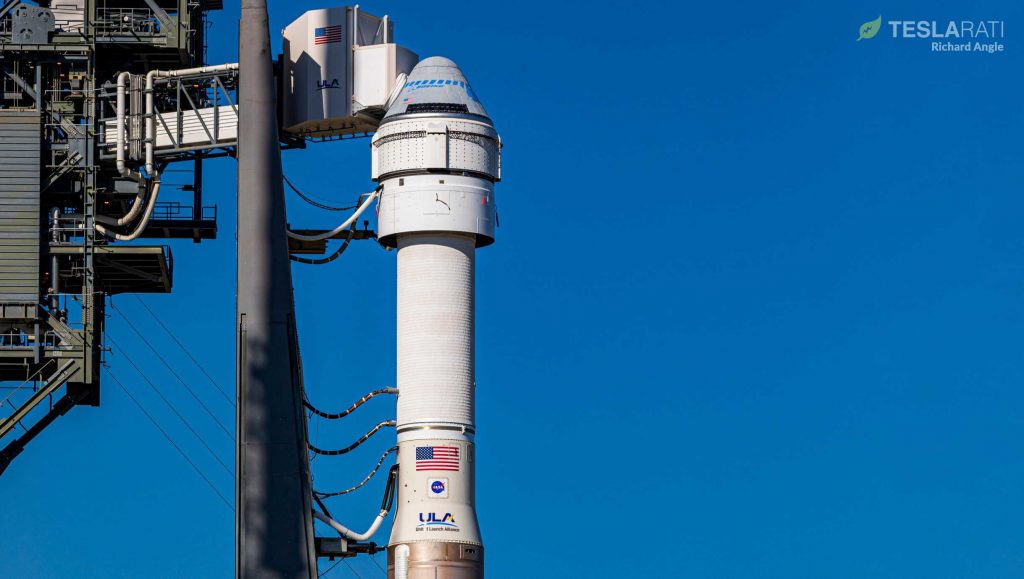
As such, it’s substantially less surprising than it might otherwise be that Boeing’s Starliner spacecraft has had such a rocky orbital launch debut. Preceded just a matter of weeks by a quality assurance failure that prevented one of Starliner’s four parachutes from deploying after an otherwise-successful pad abort test, a second Starliner spacecraft launched atop an Atlas V rocket on its orbital launch debut (OFT) on December 20th, 2019. Atlas V performed flawlessly but immediately after Starliner separated from the rocket, things went very wrong.
Bad software ultimately caused the spacecraft to perform thousands of uncommanded maneuvering thruster burns, depleting a majority of its propellant before Boeing was able to intervene. Starliner managed to place itself in low Earth orbit (LEO), but by then it had nowhere near enough propellant left to rendezvous and dock with the ISS – one of the most crucial purposes of the uncrewed flight test. Unable to complete that part of the mission, Boeing instead did a few small tests over the course of 48 hours in orbit before commanding the spacecraft’s reentry and landing on December 22nd.
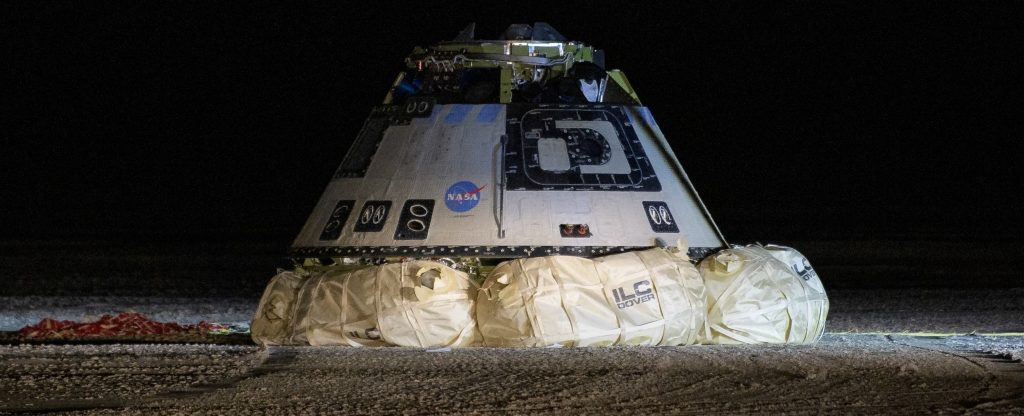
But wait, there’s more!
As it turns out, although both NASA and Boeing inexplicably withheld the information from the public for more than two months, Boeing’s OFT Starliner spacecraft reportedly almost suffered a second major software failure just hours before reentry. According to NASA and Boeing comments in a press conference held only after news of that second failure broke after an advisory panel broached the issue in February 2020, a second Starliner software bug – caught only because the first failure forced Boeing to double-check its code – could have had far more catastrophic consequences.
NASA officials stated that had the second bug not been caught, some of Starliner’s thruster valves would have been frozen, either entirely preventing or severely hampering the spacecraft’s detached trunk from properly maneuvering in orbit. Apparently, that service module (carrying fuel, abort engines, a solar array, and more) could have crashed into the crew module shortly after detaching from it. Unsurprisingly, that ‘recontact’ could have severely damaged the Starliner crew capsule, potentially making reentry impossible (or even fatal) if its relatively fragile heat shield bore the brunt of that impact.
SpaceX has undeniably suffered its own significant failures, most notably when flight-proven Crew Dragon capsule C201 exploded moments before a static fire test, but the company has already proven that it fixed the source of the failure with the spacecraft’s second successful launch on a Falcon 9 rocket. Ultimately, it’s becoming nearly impossible to rationally argue that Boeing’s Starliner will be safer than SpaceX’s Crew Dragon – let alone worth the 40% premium Boeing is charging NASA and the US taxpayer.

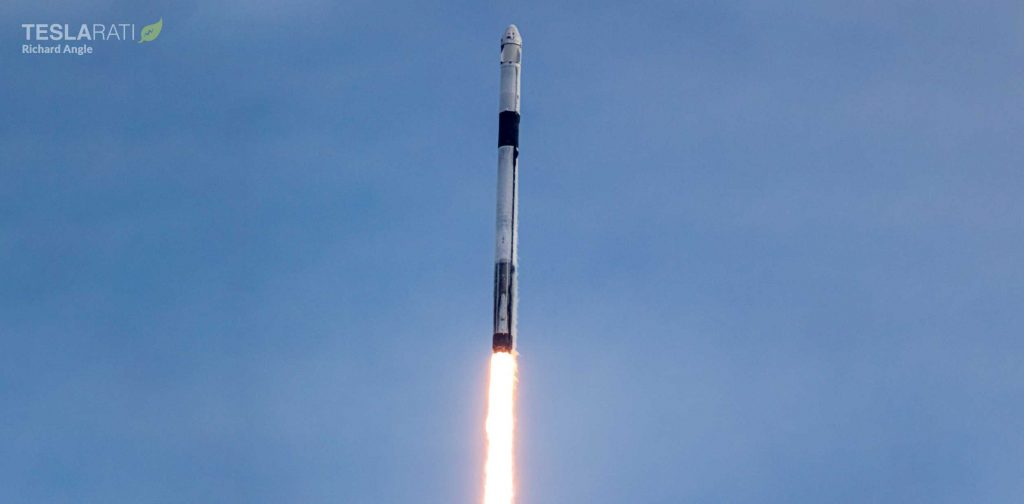
According to Ars Technica’s Eric Berger, Crew Dragon’s inaugural astronaut launch is now tentatively scheduled as early as late-April to late-May 2020. Paperwork – not technical hurdles – is currently the source of that uncertainty, and all Demo-2 mission hardware (Falcon 9 and Crew Dragon) is either already in Florida or days away from arriving.
Due to the combination of similar software failures Starliner suffered during its first and only launch, Boeing now has to review the entirety of the spacecraft’s software – more than a million lines of code – before NASA will allow the company to launch again. There’s also a very good chance that Boeing will now have to repeat the Orbital Flight Test, potentially incurring major delays. In short, it would take nothing less than a miracle – or NASA making a public mockery of itself for Boeing’s benefit – for Starliner to launch astronauts before SpaceX.
Check out Teslarati’s Marketplace! We offer Tesla accessories, including for the Tesla Cybertruck and Tesla Model 3.

News
Tesla starts showing how FSD will change lives in Europe
Local officials tested the system on narrow country roads and were impressed by FSD’s smooth, human-like driving, with some calling the service a game-changer for everyday life in areas that are far from urban centers.

Tesla has launched Europe’s first public shuttle service using Full Self-Driving (Supervised) in the rural Eifelkreis Bitburg-Prüm region of Germany, demonstrating how the technology can restore independence and mobility for people who struggle with limited transport options.
Local officials tested the system on narrow country roads and were impressed by FSD’s smooth, human-like driving, with some calling the service a game-changer for everyday life in areas that are far from urban centers.
Officials see real impact on rural residents
Arzfeld Mayor Johannes Kuhl and District Administrator Andreas Kruppert personally tested the Tesla shuttle service. This allowed them to see just how well FSD navigated winding lanes and rural roads confidently. Kruppert said, “Autonomous driving sounds like science fiction to many, but we simply see here that it works totally well in rural regions too.” Kuhl, for his part, also noted that FSD “feels like a very experienced driver.”
The pilot complements the area’s “Citizen Bus” program, which provides on-demand rides for elderly residents who can no longer drive themselves. Tesla Europe shared a video of a demonstration of the service, highlighting how FSD gives people their freedom back, even in places where public transport is not as prevalent.
What the Ministry for Economic Affairs and Transport says
Rhineland-Palatinate’s Minister Daniela Schmitt supported the project, praising the collaboration that made this “first of its kind in Europe” possible. As per the ministry, the rural rollout for the service shows FSD’s potential beyond major cities, and it delivers tangible benefits like grocery runs, doctor visits, and social connections for isolated residents.
“Reliable and flexible mobility is especially vital in rural areas. With the launch of a shuttle service using self-driving vehicles (FSD supervised) by Tesla in the Eifelkreis Bitburg-Prüm, an innovative pilot project is now getting underway that complements local community bus services. It is the first project of its kind in Europe.
“The result is a real gain for rural mobility: greater accessibility, more flexibility and tangible benefits for everyday life. A strong signal for innovation, cooperation and future-oriented mobility beyond urban centers,” the ministry wrote in a LinkedIn post.
News
Tesla China quietly posts Robotaxi-related job listing
Tesla China is currently seeking a Low Voltage Electrical Engineer to work on circuit board design for the company’s autonomous vehicles.

Tesla has posted a new job listing in Shanghai explicitly tied to its Robotaxi program, fueling speculation that the company is preparing to launch its dedicated autonomous ride-hailing service in China.
As noted in the listing, Tesla China is currently seeking a Low Voltage Electrical Engineer to work on circuit board design for the company’s autonomous vehicles.
Robotaxi-specific role
The listing, which was shared on social media platform X by industry watcher @tslaming, suggested that Tesla China is looking to fill the role urgently. The job listing itself specifically mentions that the person hired for the role will be working on the Low Voltage Hardware team, which would design the circuit boards that would serve as the nervous system of the Robotaxi.
Key tasks for the role, as indicated in the job listing, include collaboration with PCB layout, firmware, mechanical, program management, and validation teams, among other responsibilities. The role is based in Shanghai.
China Robotaxi launch
China represents a massive potential market for robotaxis, with its dense urban centers and supportive policies in select cities. Tesla has limited permission to roll out FSD in the country, though despite this, its vehicles have been hailed as among the best in the market when it comes to autonomous features. So far, at least, it appears that China supports Tesla’s FSD and Robotaxi rollout.
This was hinted at in November, when Tesla brought the Cybercab to the 8th China International Import Expo (CIIE) in Shanghai, marking the first time that the autonomous two-seater was brought to the Asia-Pacific region. The vehicle, despite not having a release date in China, received a significant amount of interest among the event’s attendees.
Elon Musk
Elon Musk and Tesla AI Director share insights after empty driver seat Robotaxi rides
The executives’ unoccupied tests hint at the rapid progress of Tesla’s unsupervised Robotaxi efforts.

Tesla CEO Elon Musk and AI Director Ashok Elluswamy celebrated Christmas Eve by sharing personal experiences with Robotaxi vehicles that had no safety monitor or occupant in the driver’s seat. Musk described the system’s “perfect driving” around Austin, while Elluswamy posted video from the back seat, calling it “an amazing experience.”
The executives’ unoccupied tests hint at the rapid progress of Tesla’s unsupervised Robotaxi efforts.
Elon and Ashok’s firsthand Robotaxi insights
Prior to Musk and the Tesla AI Director’s posts, sightings of unmanned Teslas navigating public roads were widely shared on social media. One such vehicle was spotted in Austin, Texas, which Elon Musk acknowleged by stating that “Testing is underway with no occupants in the car.”
Based on his Christmas Eve post, Musk seemed to have tested an unmanned Tesla himself. “A Tesla with no safety monitor in the car and me sitting in the passenger seat took me all around Austin on Sunday with perfect driving,” Musk wrote in his post.
Elluswamy responded with a 2-minute video showing himself in the rear of an unmanned Tesla. The video featured the vehicle’s empty front seats, as well as its smooth handling through real-world traffic. He captioned his video with the words, “It’s an amazing experience!”
Towards Unsupervised operations
During an xAI Hackathon earlier this month, Elon Musk mentioned that Tesla owed be removing Safety Monitors from its Robotaxis in Austin in just three weeks. “Unsupervised is pretty much solved at this point. So there will be Tesla Robotaxis operating in Austin with no one in them. Not even anyone in the passenger seat in about three weeks,” he said. Musk echoed similar estimates at the 2025 Annual Shareholder Meeting and the Q3 2025 earnings call.
Considering the insights that were posted Musk and Elluswamy, it does appear that Tesla is working hard towards operating its Robotaxis with no safety monitors. This is quite impressive considering that the service was launched just earlier this year.








